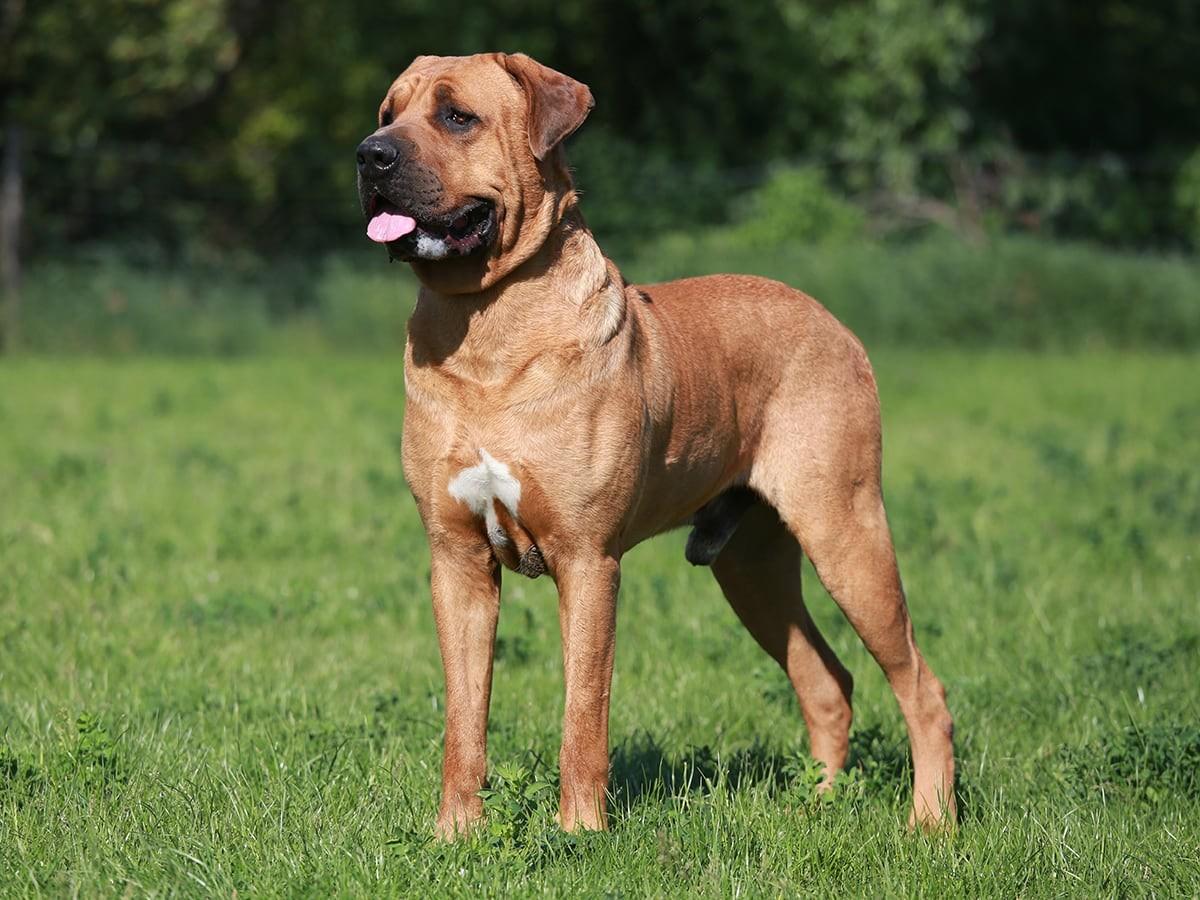
Tosa Inu
The Tosa Inu is a Japanese mastiff type dog breed with a muscular body and dark brown eyes. They have small and thin ears which are flopped on either side of the face. Tosa Inu is one of the rare dog breeds found in Japan.
Breed Profile
Height
21 - 24
Inches
Weight
100 - 200
Pounds
Life Span
10 – 12
Years
Health
health
Elbow and Hip Dysplasia
What is it?:
Elbow and Hip Dysplasia is a developmental disorder caused by lack of development in the joint.
Clinical signs
Lack of activity
A reduction in range of motion
Loss of thigh muscle
Hopping while walking
Discomfort in standing
Loss of appetite
Lethargy
Popping sounds of joints
Treatment
Large breed dogs are often prone to hip and elbow dysplasia. Hip and elbow Dysplasia can also be developed due to genetics. A few treatment options include joint supplements for strengthening their joints and physical therapy to improve the movement of their joints. In cases of pain, anti-inflammatory drugs may be given for discomfort and swelling. In severe cases, surgery may be performed for the replacement of the joint. In some cases, Acupuncture also assists with improving movement.
Eligible vet bill
$5,000
*Hypothetical reimbursement examples illustrate reimbursement of an eligible vet bill at the noted reimbursement rate, assuming the annual deductible had already been satisfied and the annual coverage limit has not yet been met. Annual deductible, co-insurance, benefit and coverage limits, and exclusions may apply. Eligibility may vary. Visit https://spotpetinsurance.ca/sample-policy for full terms. For Canada enrollments only, reimbursement rate is based on the pet's age.
Personality
Quiet
The Tosa Inu has small eyes that give a serene look to the breed. They are calm natured and have high tolerance.
Athletic
The Tosa Inu is an active and athletic breed but their exercise requirements are moderate.
Protective
The Tosa Inu were once a fighting dog breed which makes them great watch dogs. They are protective about their family.
Lifetime Care
Coat
The Tosa Inu has a coat which is short, dense and rough.
Colors
The Tosa Inu has various coat colors like black, brindle, red fawn and brown.
Hypoallergenic
No
Grooming
The Tosa Inu does not have major grooming requirements. They have a coat which is short and dense and does not shed much hair. Their coat does not require any trimming. Only their nails need to be trimmed every two weeks.
Training
The Tosa Inu is a people-pleasing breed and will obey its owners. They can be willful but positive training and setting some rules will help to discipline them. They may require social training from an early age so that they are not territorial.
The Tosa Inu was found in the Tosa region of Japan. They are a cross between local breeds with Mastiffs, St. Bernards, Great Danes, and Bull Terriers. They were bred to be fighting dogs. In Japan, dog fighting is a legal sport and these dogs are still used for this purpose. The Tosa Inu have a strong, courageous, and brave nature, which makes them great watchdogs.
Tosa Inu: Introduction to the Breed
Tosa Inu Physical Characteristics:
Thin ears, that are not erect
Muscular body
Small dark brown eyes
Square muzzle
Scissor bite
Deep chest
Tosa Inu is best suited for pet owners:
Who wants a gentle family dog
Who are experienced
Who have kids
Who has a bigger space
Who can train them
Things to watch out for before deciding to own a Tosa Inu
The Tosa Inu can be aggressive and stubborn and requires the right training to make them sociable.
They have a high guarding instinct and can be alert around strangers. They need to be trained well to learn to interact with strangers.
They may not be a great choice if the family has toddlers, as despite their calmness with children they may know them down due to their size.
They require a larger space than an apartment as they are a large dog breed and need space to move around.
It is better to keep the Tosa Inu on a leash when outdoors as they can be aggressive.
What should a Tosa Inu do?
Due to the size of the Tosa Inu, it is extremely important to take care of their weight as they are prone to Hip Dysplasia. They do not have any particular food requirements. They love to eat meat. They can also be given a balance of wet and dry food. They should have access to clean drinking water. Treats should be given in controlled quantities for weight management.
Conclusion
The Tosa Inu is a large dog breed and is also known to be a companion dog. They are extremely patient and calm and are also great with children. If you are looking for a dog to guard your house then they are the best pick as they are alert, courageous, and willful. Their people-pleasing personality makes it easier for them to win their owner’s heart.
Sources:


